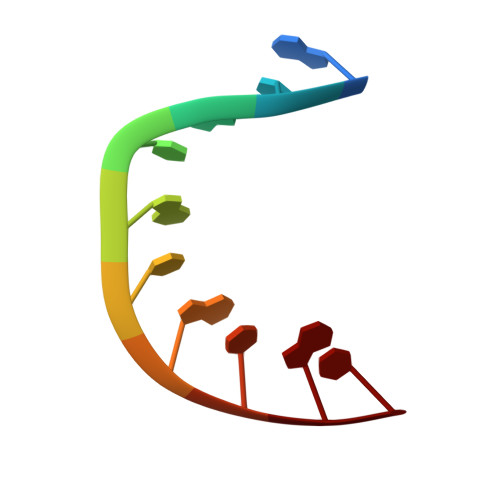Mechanism of the extremely high duplex-forming ability of oligonucleotides modified with N-tert-butylguanidine- or N-tert-butyl-N'- methylguanidine-bridged nucleic acids.
Yamaguchi, T., Horie, N., Aoyama, H., Kumagai, S., Obika, S.(2023) Nucleic Acids Res 51: 7749-7761
- PubMed: 37462081
- DOI: https://doi.org/10.1093/nar/gkad608
- Primary Citation of Related Structures:
8HIS, 8HU5, 8I50 - PubMed Abstract:
Antisense oligonucleotides (ASOs) are becoming a promising class of drugs for treating various diseases. Over the past few decades, many modified nucleic acids have been developed for application to ASOs, aiming to enhance their duplex-forming ability toward cognate mRNA and improve their stability against enzymatic degradations. Modulating the sugar conformation of nucleic acids by substituting an electron-withdrawing group at the 2'-position or incorporating a 2',4'-bridging structure is a common approach for enhancing duplex-forming ability. Here, we report on incorporating an N-tert-butylguanidinium group at the 2',4'-bridging structure, which greatly enhances duplex-forming ability because of its interactions with the minor groove. Our results indicated that hydrophobic substituents fitting the grooves of duplexes also have great potential to increase duplex-forming ability.
- Graduate School of Pharmaceutical Sciences, Osaka University, 1-6 Yamadaoka, Suita, Osaka 565-0871, Japan.
Organizational Affiliation:

















